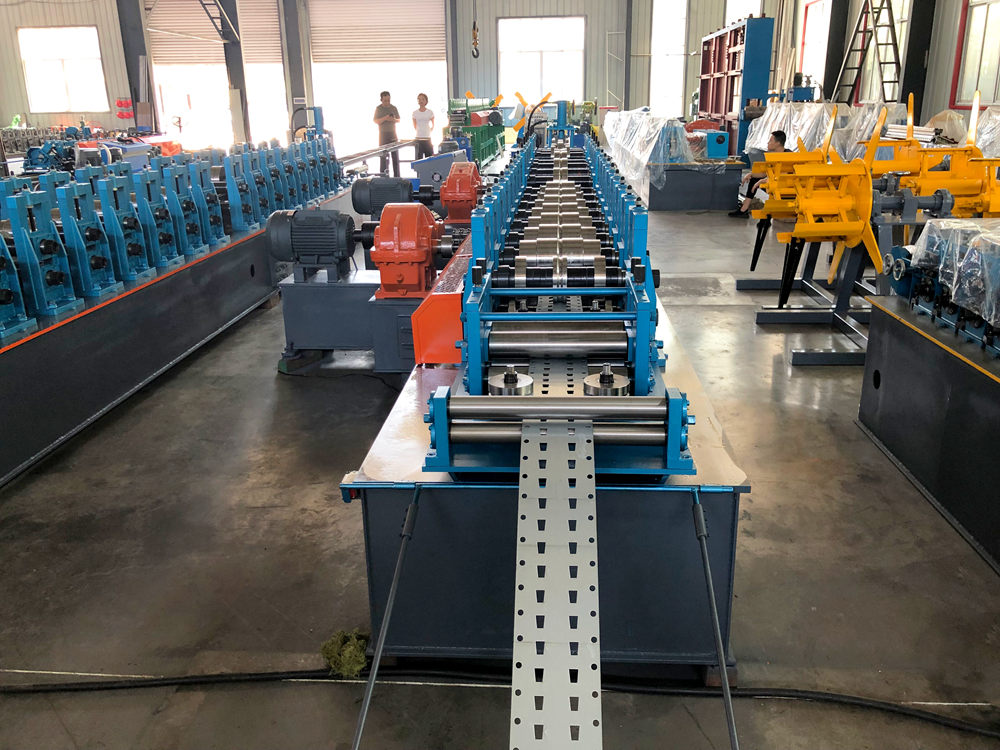
Understanding Standing Seam Roll Forming Machines
In the world of modern construction and manufacturing, efficiency and precision are paramount. Among the essential tools that have revolutionized the way roofing and wall panels are produced is the standing seam roll forming machine. This advanced machinery plays a crucial role in the fabrication of standing seam metal roofs, which are renowned for their durability, weather resistance, and aesthetic appeal.
What is a Standing Seam Roll Forming Machine?
A standing seam roll forming machine is a specialized piece of equipment used to produce metal panels with raised seams, known as standing seams. These seams are a critical feature of metal roofing systems, designed to interlock and provide a robust barrier against water infiltration. The roll forming process involves feeding metal sheets through a series of rollers that gradually shape the material into the desired panel profile.
Typically made from materials like galvanized steel, aluminum, or copper, the outputs of this machine feature a distinct vertical leg and a flat panel, which are then seamed together at the top. This design not only enhances the aesthetics of the building but also facilitates effective water drainage, making it a popular choice for both commercial and residential structures.
Key Features and Benefits
1. Precision Manufacturing One of the most significant advantages of using standing seam roll forming machines is their ability to produce panels with high precision. The machinery is designed to create consistent dimensions and shapes, ensuring a perfect fit during installation. This precision reduces material waste and enhances overall project efficiency.
2. Speed and Efficiency Roll forming machines operate at high speeds, allowing manufacturers to produce large quantities of panels in a short time frame. This increased throughput is critical for meeting tight construction deadlines and managing project budgets effectively.

3. Versatility Modern standing seam roll forming machines often come equipped with adjustable settings, enabling them to produce a variety of panel profiles and thicknesses. This versatility allows manufacturers to cater to diverse customer needs, from residential homes to large commercial buildings.
4. Durability The materials used in standing seam panels are typically coated with protective finishes to withstand harsh weather conditions and resist corrosion. This durability means reduced maintenance and replacement costs over the lifespan of the roof, making it a cost-effective solution in the long run.
5. Sustainability Many standing seam roll forming machines are designed to work with recyclable materials, aligning with sustainable construction practices. This not only reduces environmental impact but also appeals to eco-conscious consumers and builders.
Applications
Standing seam roofing systems are utilized in various applications. Their aesthetic appeal makes them popular for residential homes, particularly in modern architectural designs where sleek lines and color choices can enhance visual interest. Furthermore, commercial buildings often benefit from standing seam roofs due to their longevity and low maintenance requirements.
In addition to roofing, standing seam panels can also be employed in wall cladding systems. This application adds to the exterior insulation of the building while providing a visually appealing finish. As such, the versatility of standing seam panels extends beyond roofing, demonstrating their utility in contemporary construction practices.
Conclusion
The standing seam roll forming machine represents a significant advancement in the construction and manufacturing sectors. Its ability to produce high-quality, durable, and aesthetically pleasing metal panels has made it a vital component in the building industry. As the demand for energy-efficient and sustainable building solutions grows, the appeal of standing seam roofing systems is likely to increase. Investing in a standing seam roll forming machine not only enhances production capabilities but also positions manufacturers to meet the evolving needs of the construction market. As technology continues to advance, the future of standing seam roll forming promises to bring even more innovation and efficiency to the industry.